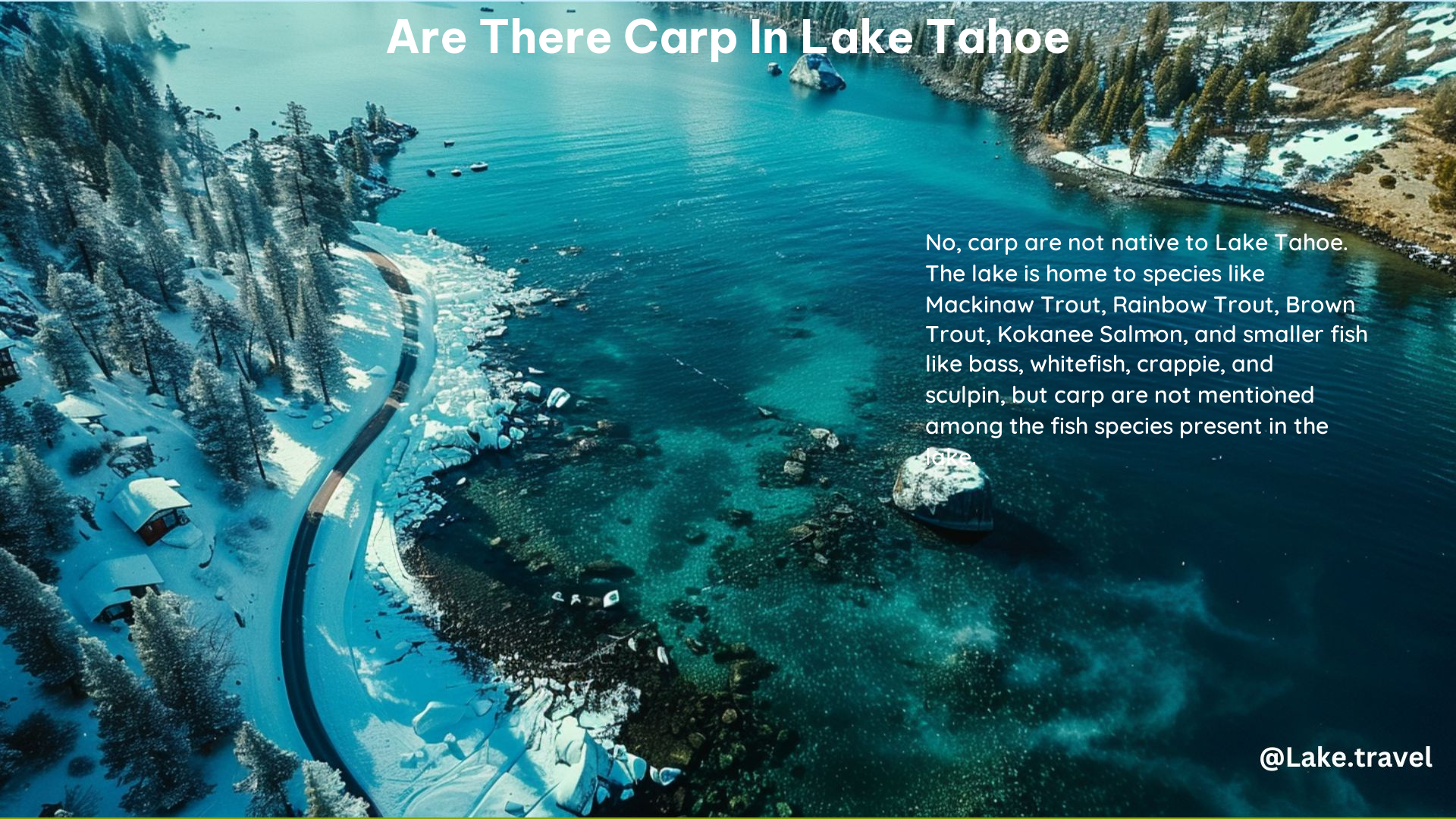No, carp are not native to Lake Tahoe. The primary fish species found in Lake Tahoe include Mackinaw (Lake Trout), German Browns, Rainbow Trout, and Kokanee Salmon. Carp are considered invasive species and are not typically found in the lake. However, they can be found in other bodies of water in the Sierra region.
The Native Fish Species of Lake Tahoe
Lake Tahoe is home to a diverse array of fish species, but carp are not among them. The native fish species found in the lake include:
-
Mackinaw (Lake Trout): The Mackinaw, also known as the Lake Trout, is the largest and most sought-after game fish in Lake Tahoe. These predatory fish can grow up to 40 inches in length and weigh over 30 pounds.
-
German Browns: German Brown Trout were introduced to Lake Tahoe in the late 19th century and have since become a popular target for anglers. These fish can grow to impressive sizes, with some reaching over 20 inches in length.
-
Rainbow Trout: Rainbow Trout are another non-native species that have become well-established in Lake Tahoe. These fish are known for their vibrant colors and are a favorite among fly fishermen.
-
Kokanee Salmon: Kokanee Salmon are a land-locked variety of the Pacific Salmon. They were introduced to Lake Tahoe in the 1940s and have since become a valuable part of the lake’s ecosystem.
Why Carp are Not Found in Lake Tahoe

Carp are not native to Lake Tahoe for several reasons:
-
Water Temperature: Lake Tahoe is a cold-water lake, with an average surface temperature of around 50°F (10°C). Carp prefer warmer waters, typically thriving in lakes and rivers with temperatures between 68°F (20°C) and 86°F (30°C).
-
Oxygen Levels: Lake Tahoe is known for its high levels of dissolved oxygen, which is essential for the survival of trout and other cold-water species. Carp, on the other hand, are more tolerant of low-oxygen environments and are often found in stagnant or slow-moving waters.
-
Habitat Preferences: Carp are typically found in shallow, nutrient-rich waters with abundant aquatic vegetation. Lake Tahoe, with its deep, clear waters and rocky shorelines, does not provide the ideal habitat for carp to thrive.
-
Invasive Species Concerns: Carp are considered an invasive species in many parts of the world, as they can outcompete native fish for resources and disrupt the natural ecosystem. The introduction of carp to Lake Tahoe could have significant negative impacts on the lake’s delicate balance, which is why they are not actively stocked or encouraged in the region.
Efforts to Maintain the Ecological Balance of Lake Tahoe
The preservation of Lake Tahoe’s unique ecosystem is a top priority for local authorities and conservation organizations. To maintain the lake’s ecological balance, several measures have been implemented:
-
Invasive Species Monitoring and Control: Authorities closely monitor the lake for the presence of invasive species, such as quagga mussels and Asian clams, and take immediate action to prevent their spread.
-
Native Fish Stocking: The California Department of Fish and Wildlife and the Nevada Department of Wildlife regularly stock the lake with native fish species, such as Mackinaw and Kokanee Salmon, to maintain healthy populations.
-
Habitat Restoration: Efforts are underway to restore and protect the lake’s shoreline and nearshore habitats, which are crucial for the survival of native fish species.
-
Fishing Regulations: Strict fishing regulations, including catch limits and size restrictions, are in place to ensure the sustainable management of Lake Tahoe’s fisheries.
Fishing in Lake Tahoe
Lake Tahoe is a renowned destination for anglers, offering a variety of fishing opportunities. While carp are not found in the lake, there are plenty of other species to target:
| Fish Species | Average Size | Fishing Techniques |
|---|---|---|
| Mackinaw (Lake Trout) | 15-30 inches | Trolling, jigging, bait fishing |
| German Browns | 12-20 inches | Fly fishing, spin casting, bait fishing |
| Rainbow Trout | 12-18 inches | Fly fishing, spin casting, bait fishing |
| Kokanee Salmon | 12-16 inches | Trolling, jigging, bait fishing |
It’s important to note that fishing regulations and license requirements vary between California and Nevada, as the lake straddles the border between the two states. Anglers should familiarize themselves with the local regulations before embarking on a fishing trip to Lake Tahoe.
Conclusion
In summary, carp are not native to Lake Tahoe and are not typically found in the lake. The primary fish species in Lake Tahoe include Mackinaw (Lake Trout), German Browns, Rainbow Trout, and Kokanee Salmon. The lake’s cold water temperatures, high oxygen levels, and unique habitat make it an unsuitable environment for carp to thrive. Authorities and conservation organizations work diligently to maintain the ecological balance of Lake Tahoe, ensuring the preservation of its native fish species and the overall health of the lake.
Reference:
– Lake Tahoe Fisheries Management Plan
– Invasive Species in Lake Tahoe
– Fishing Regulations in Lake Tahoe
